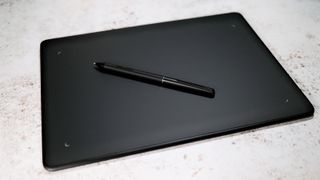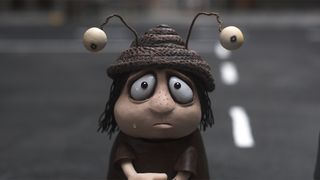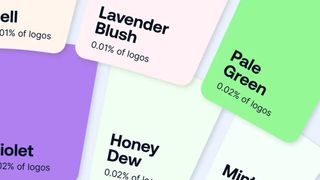The best monitor calibrator tools
Ensure your screen displays accurate colours with one of the best monitor calibrators available today.
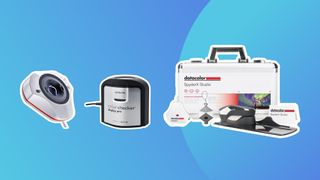
The best monitor calibrator tools are an essential but sometimes overlooked tool for anyone producing visual work, including designers, photographers and videographers. Even monitors and laptop screens that boast good colour coverage and accuracy can vary over time in their output. Regular calibration is required to ensure you always see your work's true colours.
Fortunately, the best monitor calibrators are easy to use. You place one on your screen to perform a check on the display's brightness, contrast and colour coverage and accuracy. At Creative Bloq, we routinely use monitor calibrators on our own displays and to perform lab tests when we write our monitor reviews. We've picked our favourites below, highlighting the best monitor calibration tools for different needs and budgets. We've considered the types of screens they can calibrate and useful extra features like ambient light detection and multi-screen calibration.
See the questions section at the bottom of this guide if you're still unsure of what a monitor calibrator does and whether you need one. Of course, you'll want a decent monitor to start with to get optimum results for your work. We have guides to the best monitors for photo editing and the best monitors for graphic artists, which will give you some ideas about the best monitors out there for creative professionals.
The best monitor calibrator tools available now
Why you can trust Creative Bloq
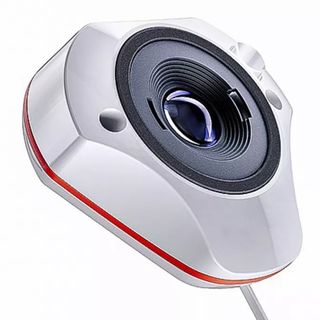
Best monitor calibrator for most people
+ High accuracy
+ Superb value
This monitor calibrator is quite affordable and yet offers useful advanced features like multi-monitor support. It also detects light conditions to ensure your screen looks its best wherever you're working. Overall, this standard option offers everything most people need for reliable monitor calibration.
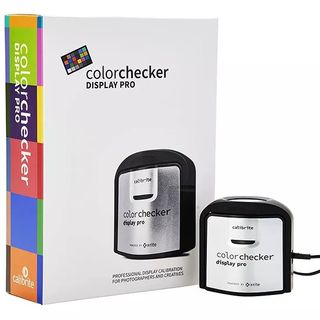
Best calibrator for multiple screens
+ Use the same profile on multiple displays
+ So many options
This monitor calibrator lets you use your profile across multiple displays, as well as assess the ambient light in your workspace for best results. It will measure and adjust your display profile for reduced contrast ratios caused by glare on your screen. Video colour standards are also incorporated.
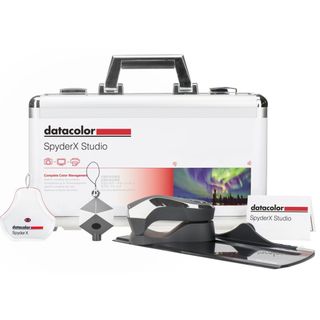
Best monitor calibrator for pros
+ Combined monitor and print solution
+ Good performance
If you have the budget and space, this all-in-one kit gives pro photographers and designers everything they need. Offering a collection of some of the best calibration and colour-assessing tools on the market all together, it will be a bit overwhelming for beginners but perfect for professionals.
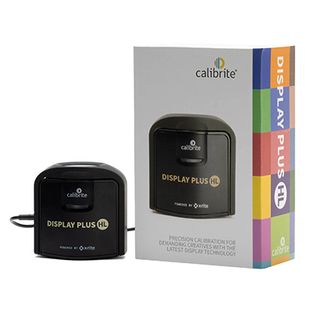
The best for super-bright screens
+ Measures up to 10,000 nits
+ Greater accuracy for super-bright screens
New in 2023, this is the best monitor calibrator for a specific niche: those working with HDR video using the latest super-bright screens. The 'HL' stands for 'high luminance'. This top-of-the-range device provides HDR support and the ability to set BT 1886 gamma. It suits LCD, mini-LED and OLED displays, including Apple XDR panels.
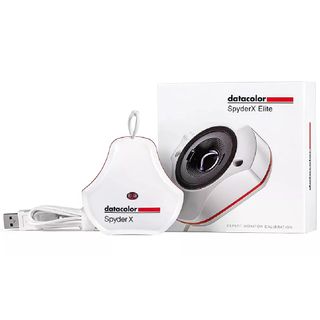
Complete calibrator for video colour spaces
+ Customisable
+ Potentially useful extra features
This pricier version of our number one pick might be preferable if you want to calibrate your monitor for video colour spaces. That's because it not only conforms to a typical 2.2 gamma and 6500 K white point, but also to colour space standards like sRGB, Adobe RGB, NTSC and Rec 709.
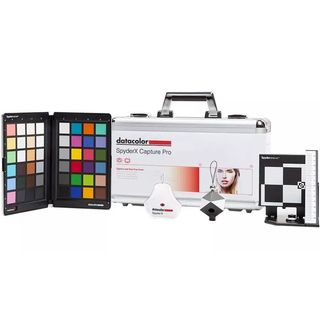
Best monitor calibration bundle for photographers
+ Extra tools for photographers
+ Lens calibrator
With this bundle, you get the SpyderX Elite monitor calibrator plus other tools for photographers: the Spyder LensCal for lens autofocus, the Spyder Cube to define white and black values and get accurate RAW settings for editing, and Spyder Checkr to aid colour consistency.
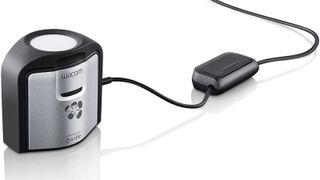
Best monitor calibrators for Wacom tablets
+ 1ms response time
+ Specifically designed for Wacom tablets
This display calibrator is designed specifically for use with Wacom's own Cintiq pen displays (and not all of them, so be sure to check if yours is compatible). It's fairly expensive – comparable to the Calibrite Display Pro at number 2, but it's a specialist tool for a very particular task.
How to choose the best monitor calibrator
When it comes to choosing the best monitor calibrator, there are really two main brands : Datacolor's Spyder X range and Calibrite's ColorChecker (Wacom has a calibrator for its own drawing tablets too).
Both Datacolor and Calibrite offer several models: a standard option, a more professional model with extra features and studio packages that can also calibrate printers. They also have bundles that include other tools, often aimed at photographers. How much you need to spend depends to an extent on what you need it to calibrate and what you use your screen for, but there are several aspects to consider:
Screen types: Monitors use different types of technology, and that can affect their colours, so you want a calibration tool that can account for things like LED backlighting. Most of the tools we've included in our guide to the best monitor calibrators can be used on any monitor or laptop, and also on projectors, but always double-check the tool you're going to buy.
If you print your work, you can also calibrate your printer to ensure its colours are also the best they can be. For that, you’ll need a calibrator designed for printer profiling, such as the Datacolor SpyderX Studio at number 3 or Calibrite ColorChecker Display Plus at number 5 in our list above.
Ambient light detection: look for this feature for customised calibration that adapts to compensate for the surrounding ambient light in your room or office.
Speed: how fast your monitor calibration tool works might not seem so important, but if you calibrate your monitor as often as your should, then you'll be grateful for a fast device. Most options will actually remind you when it's time for your to calibrate your screen again.
Other features: More advanced features to look out for on monitor calibrators are conformity with the best-known colour standards and screen calibration, which ensures you see the same colours across a multi-monitor setup.
FAQs
What is a monitor calibrator tool?
Monitor calibration involves measuring and adjusting the colours on your computer monitor to meet a set standard (see our guide to colour theory). The best monitor calibrator tools include two components to do that: hardware and software. The hardware takes the form of a sprectocolorimiter or colorimeter, which measures your monitor and records colour values, brightness and contrast, as well as other variables. The software takes that data and builds a colour profile for your monitor.
What's the purpose of a monitor calibrator tool?
The monitor you use and the setting where you locate it can have a big impact on how your work looks. Every screen displays images differently, so the colours you see on a phone screen, your monitor or a client's monitor will vary. That's because the internal workings of every screen are different (before you factor in the screen settings and ambient light conditions).
This is a big deal for anyone who works in visual arts and design. Most computer screens give a vibrant, dynamic picture, but this isn’t always the best for editing your photos, for example. If you edit images on a monitor that hasn’t been calibrated, you may end up exporting pictures that look oversaturated, muted or have an obvious colour cast when you see them on another screen or on a printed support.
It doesn’t matter which colour space you select on your camera or how you adjust Photoshop’s settings – if the screen has a warm cast or a cool blue cast and isn’t showing you an accurate picture, then any edits you make may be subtly or substantially out.
So which version represents the “true” colour? And will printed materials look like they do on your screen? This is where the best monitor calibrators come in. Technically known as colorimeters, they look at your screen and detect any discrepancies, taking account of how your display actually looks in your office space, whether that's at home, in a co-working space or from a dedicated workspace.
They can then program your computer then programmed to compensate for the colour inaccuracy of your monitor. Calibrating your monitor also means looking after yourself because it helps reduce eye strain during intensive work sessions.
Do I need a monitor calibrator?
Probably, at least if you aim to work professionally in any visual creative field, be it graphic design, photo editing or videography. Some of more expensive monitors that are specifically designed for creative professionals come with their own monitor calibrator tools included. However, in most cases, you'll need to buy a monitor calibrator separately to enable you to calibrate your screen.
Some downloadable tools claim to be able to do this too, but they can't actually 'see' your screen like the best monitor calibrators. Failing to calibrate your screen can result in work that looks very different when you see it on another screen or printed out. This can be because your monitor had poor colour accuracy to begin with, because output varies over time or because of the impact of ambient light.
How often should I calibrate my monitor?
All monitors change in colour, contrast, and brightness as they age. Because of this, the majority of the best calibration software suggests you calibrate your monitor (or monitors) every 2-6 weeks. With the monitor calibrators we've listed above, the process only takes around two minutes per monitor.
LCD monitors don’t age or change as quickly as older CRT technology, but you still want to rest assured that colours on your screen are accurate so even an LCD should be calibrated every six months at the very least. For a detailed look at how monitor calibration tools work, see our article on how to calibrate your monitor.
Are Calibrite the same as X-Rite monitor calibrators?
This is a question we sometimes get asked about one of the two major brands in monitor calibrator tools. Basically, yes; the tools that used to be X-Rite are now Calibrite. X-Rite owns a number of subsidiaries, including the well-known colour specialist Pantone. In mid-2021, it split off its monitor calibrator tools into a separate company, Calibrite.
It's a rebranding that caused some confusion among users, but despite being a separate company, Calibrite licences the monitor calibrator tech from X-Rite, so they're described as "powered by X-Rite" and contain the same tech as before.
How we tested the best monitor calibrators
We've tested most of the monitor calibrators on the market in the course of the regular lab tests we perform for monitors, as well as to calibrate our own screens. We've also taken feedback from contributors to Creative Bloq, including photographers and graphic designers, who use monitor calibrators to ensure their screens are accurate for creative work.
Based on our own reviews and feedback from contributors, we identified what we think are the best monitor calibrators available for different needs, whether you're looking for the best value option, a monitor calibrator that optimised for the latest cutting-edge displays, a monitor calibrator for a Wacom tablet or a package with extra tools for photographers and other professionals.
Get the Creative Bloq Newsletter
Daily design news, reviews, how-tos and more, as picked by the editors.
Dan is the Editor of T3.com and covers the latest in computing, home entertainment and mobile tech. He's also the former Deputy Editor of TechRadar and former Editor of Lifehacker UK. Dan has written for numerous computing and lifestyle magazines and has also written a book, too. You'll see him pop up in numerous places, having been quoted in or on The Sun, BBC World Service, BBC News Online, ITN News, BBC Radio 5Live, BBC Radio 4 and Sky News Radio.
